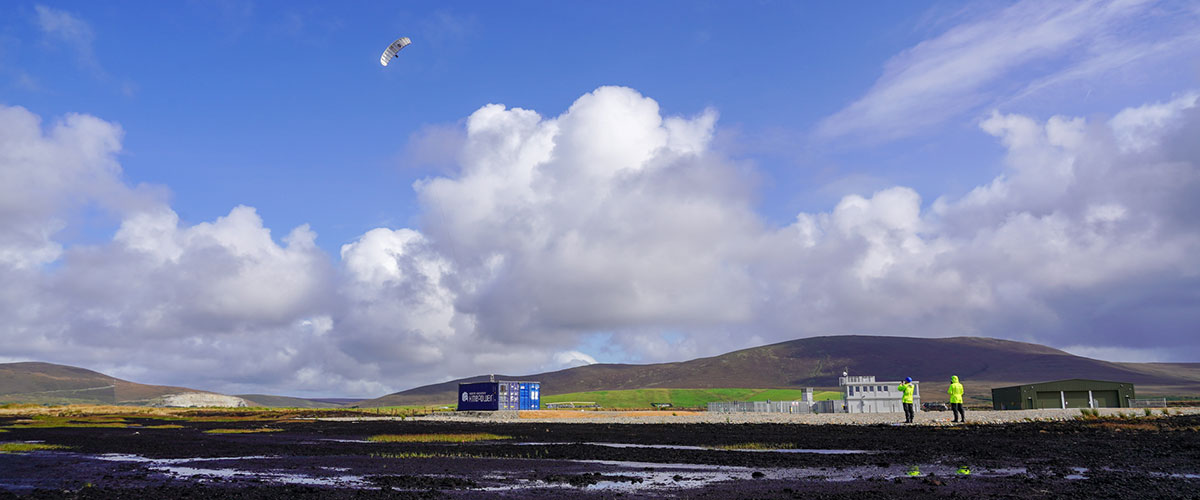Leading renewable energy consultancy and service provider, Natural Power, has secured an amendment to consent for RWE Renewables’ airborne wind demonstration site in Bangor Erris, northwest County Mayo, Ireland, enabling the testing of Kitepower’s airborne wind energy (AWE) technology.
RWE Renewables first received planning permission in 2021 for an airborne wind demonstration site, however, the glider technology specified in the original application was replaced by Kitepower’s kite technology which requires less infrastructure and will have a lesser environmental impact.
Chris Ward, Consenting and EIA Consultant at Natural Power, said: “Innovation in renewable technologies is essential for unlocking new markets and accelerating the journey to net zero, so we’re delighted to be supporting forward-thinking developers like RWE to bring new ideas to fruition.”
“The Mayo County Council Planning Department has been extremely supportive of this application and we’re all excited to see the technology being successfully tested at this site.”
The latest development saw a launch pad and a fixed-point ground station added to the site’s existing infrastructure which already includes an access road, hardstanding, a control room, and an electrical connection point.
Cathal Hennessy, RWE’s Head of Onshore Renewables Development (Wind, Solar and Storage) UK & Ireland, said: “We are delighted that RWE is helping to develop this new wind energy technology with our partner Kitepower. RWE is exploring many different industry innovations to see whether airborne wind technology could complement our existing renewables portfolio of offshore and onshore wind, solar energy and battery storage. With low capital expenditure and fewer materials, airborne wind has the potential to play a role in helping to drive down the cost of energy further. It will use winds at higher altitudes which are stronger, steadier, and more constant. It can be used onshore as well as offshore and in combination with other technologies such as solar electricity generation.”
Kitepower approach
AWE devices are a class of wind energy generator that generally take the form of a kite or glider, usually connected to a generator on the ground via a tether and winch/drum. By moving across the wind, the device can sweep a large area of sky and capture more energy.
Kitepower systems are designed to be integrated into a number of power configurations, offering mobile wind energy that is easy to transport and install, they do not require resource-intensive towers nor heavy foundations and only minimal ground-based infrastructure. This offers a cost-effective way of using kites to generate electricity.
About RWE Renewables Ireland Ltd
RWE has established itself as a key player in the Irish energy market with an expanding portfolio of projects in development and operation, operational since 2016, the company has two offices, one in Kilkenny City and one in Dún Laoghaire, Co Dublin.
RWE has one onshore wind farm in Kerry and two battery storage facilities, in Monaghan and Dublin. RWE’s objective for Ireland is to grow its renewable energy business, where RWE will be a long-term energy partner for Ireland during the country’s energy transition to 2030 and beyond. RWE has over 2 gigawatts (GW) of projects in development, comprising two offshore wind farms (1,750MW) and ten onshore wind farms (520MW) incorporating hybrid technologies.
About Kitepower
Founded by Johannes Peschel and Roland Schmehl in January 2016, Kitepower is a leading start-up in airborne wind energy (AWE), developing innovative and cost-effective alternatives to existing wind turbines. Kitepower’s patented technology is a game-changer in the wind energy sector - using up to 90% less material with the potential of being twice as efficient than conventional wind turbines with the same power output. Find out more at https://thekitepower.com/

